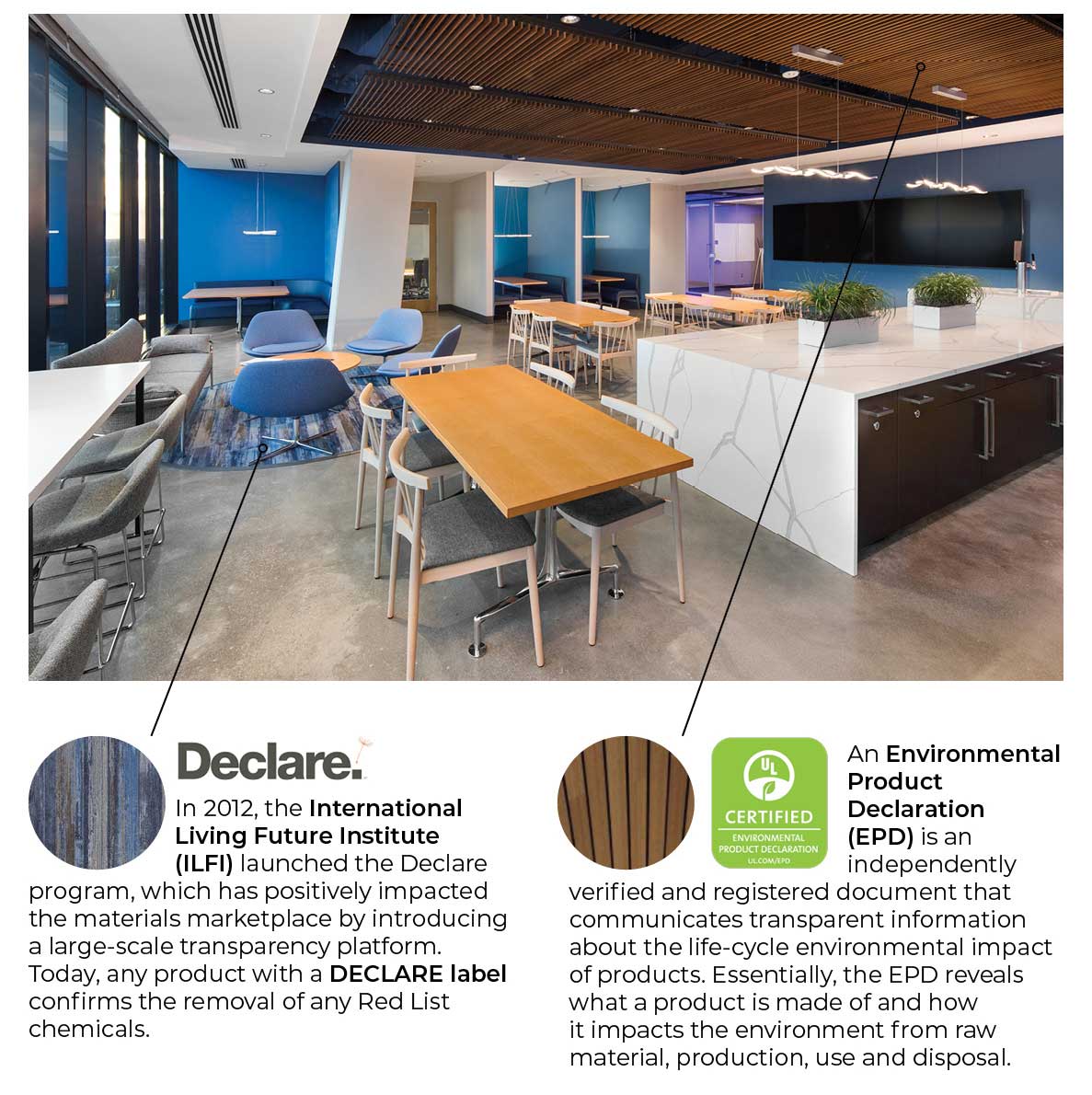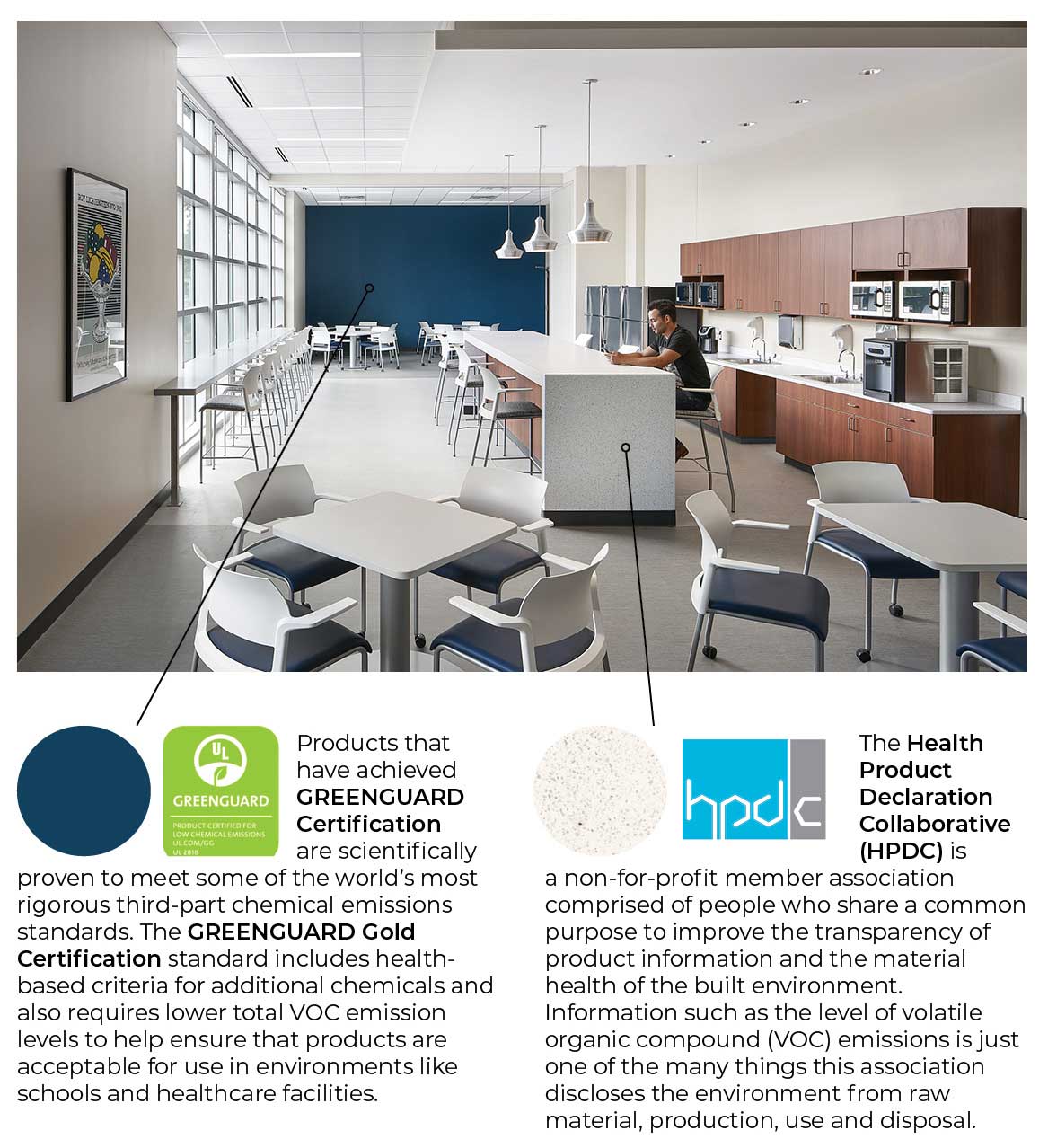Share This Story
Cost, quality, maintenance, style and color have long been important factors that are considered when selecting materials for an interior environment. As society becomes more health conscious and research on hazardous building materials continues to be well-documented, the consideration of selecting ‘healthy’ materials has quickly become one of the most important factors to examine.
Designers are predisposed to steer clients away from selecting materials that contain harmful chemicals such as asbestos, PCBs and formaldehyde. Instead, the urge to choose products that support innovation in green chemistry and advance companies towards sustainability goals is ever-present.
Similarly, manufacturers are inclined to reduce the negative effects that their products have on human health by inviting rigorous testing on their materials and shifting towards production transparency. These efforts have resulted in the removal of the “worst in class” materials, chemicals and elements that are known to pose serious risks to human health – often referred to as The Red List.
Fortunately, there are many standards and procedures in place to help manufacturers, designers and business owners easily make smart material selections.


